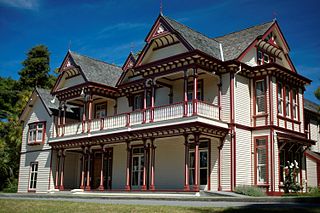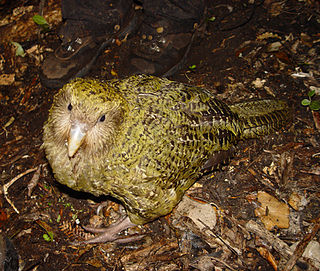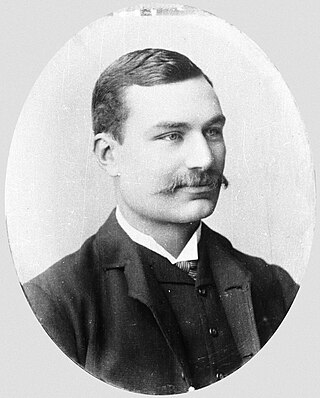Related Research Articles

The University of Canterbury is a public research university based in Christchurch, New Zealand. It was founded in 1873 as Canterbury College, the first constituent college of the University of New Zealand. It is New Zealand's second-oldest university, after the University of Otago, which was founded four years earlier, in 1869.

Christchurch is the largest city in the South Island of New Zealand and the seat of the Canterbury Region. Christchurch lies on the South Island's east coast, just north of Banks Peninsula on Pegasus Bay. The Avon River (Ōtākaro) flows through the centre of the city, with an urban park along its banks.

The bushwren, also known as the mātuhituhi in the Māori language, was a very small and almost flightless bird that was endemic to New Zealand. It had three subspecies on each of the major islands of New Zealand, the North Island, South Island, and Stewart Island / Rakiura and nearby smaller islands. The species disappeared gradually after the introduction of invasive mammalian predators, last being seen on the North Island in 1955 and the South Island in 1968. Attempts were made to save the remaining population on small islands off Stewart Island, but they ultimately failed with the death of the last remaining known birds in 1972.

Riccarton is a suburb of Christchurch. It is due west of the city centre, separated from it by Hagley Park. Upper Riccarton is to the west of Riccarton.

Ilam is a suburb of Christchurch, New Zealand about five kilometres west of the city centre. It is the location of the University of Canterbury.

Fendalton is a suburb of Christchurch, in the South Island of New Zealand.

The Christchurch Botanic Gardens, located in the central city of Christchurch, New Zealand, were founded in 1863 when an English oak was planted to commemorate the solemnisation of the marriage of Prince Albert and Princess Alexandra of Denmark. The gardens sprawl over an area of 21 hectares and lie adjacent to the loop of the Avon River next to Hagley Park. The Christchurch Botanic Gardens have a variety of collections of exotic and local plants of New Zealand, several conservatories, a nursery, playground and Climatological Station.

TheArts Centre Te Matatiki Toi Ora is a hub for arts, culture, education, creativity and entrepreneurship in Christchurch, New Zealand. It is located in the Gothic Revival former Canterbury College, Christchurch Boys' High School and Christchurch Girls' High School buildings, many of which were designed by Benjamin Mountfort. The centre is a national landmark and taonga as it is home to New Zealand's largest collection of category one heritage buildings with 21 of the 23 buildings covered by Heritage New Zealand listings.

Bryndwr is a suburb in the north-west of Christchurch, New Zealand.

The birds of New Zealand evolved into an avifauna that included many endemic species found in no other country. As an island archipelago, New Zealand accumulated bird diversity, and when Captain James Cook arrived in the 1770s he noted that the bird song was deafening.

Arthur Edgar Gravenor Rhodes was a New Zealand Member of Parliament and Mayor of Christchurch.

Andreas Reischek was an Austrian taxidermist, naturalist, ornithologist and grave robber notable for his extensive natural history collecting expeditions throughout New Zealand as well as being notorious for acts of grave robbing there. He added materially to the understanding of the biology and distribution of the New Zealand avifauna.

The Avon River / Ōtākaro flows through the centre of the city of Christchurch, New Zealand, and out to an estuary, which it shares with the Ōpāwaho / Heathcote River, the Avon Heathcote Estuary / Ihutai.
Alfred Richard Creyke JP was a 19th-century Member of Parliament in Canterbury, New Zealand. He was a significant landholder in Canterbury. Of English descent, he spent just over ten years in the colony before returning home.
John Charles Watts-Russell JP was a 19th-century New Zealand politician, a member of the Canterbury Provincial Council and a member of the Legislative Council. He was supposedly the wealthiest of the early settlers, and his homestead became the centre of entertainment in Christchurch. He was a significant runholder and, together with a business partner, was responsible for building up the Canterbury sheep stock.

Ohinetahi is a valley, historic homestead, and formal garden on Teddington Road, Governors Bay, Christchurch, Canterbury region, New Zealand. Ohinetahi valley is situated at the head of Lyttelton Harbour, at the base of the Port Hills. While the Ohinetahi Homestead is considered to be a significant historic building in the small settlement of Governors Bay, the formal garden of Ohinetahi is considered to be one of New Zealand's finest. Amongst the early owners of Ohinetahi were Canterbury pioneer William Sefton Moorhouse and Thomas Potts, New Zealand's first conservationist. Sir Miles Warren, architect of the Christchurch Town Hall, was the last private owner, and gifted it to New Zealand.

Mona Vale, with its homestead formerly known as Karewa, is a public park of 4 ha in the Christchurch suburb of Fendalton. The homestead and gate house are both listed as heritage buildings with Heritage New Zealand (NZHPT). The fernery and the rose garden, and pavilion with the setting of the park along the Avon River, add to the attractiveness of the property. It is one of the major tourist attractions of Christchurch.

George Gatonby Stead was a notable New Zealand grain merchant, racehorse owner and breeder, and businessman.

Melva Noeline Philipson was a New Zealand botanist.

Homebush Homestead was an historic home in Homebush, New Zealand, belonging to the early pioneering Deans family. The homestead was severely damaged during the 2010 Canterbury earthquake. It was demolished soon after. It has since been replaced by a new building, designed by Athfield Architects Limited.
References
- 1 2 3 Turbott, E. G. "Stead, Edgar Fraser 1881 – 1949". Dictionary of New Zealand Biography . Ministry for Culture and Heritage . Retrieved 4 April 2011.
- ↑ "NZine: Ilam Gardens". Archived from the original on 22 October 2008. Retrieved 30 March 2009.
- ↑ "Ilam Homestead". ilamhomestead.co.nz. 2010. Archived from the original on 11 September 2011. Retrieved 22 September 2011.
Ilam Homestead burnt down in 1911 and was rebuilt by Edgar Stead. He established the wonderful azalea and rhododendron gardens. When he sold Ilam to Canterbury College he requested that the gardens be maintained in perpetuity.
- ↑ "Financial gift allows Ilam Gardens to bloom". comsdev.canterbury.ac.nz. 2011. Retrieved 22 September 2011.